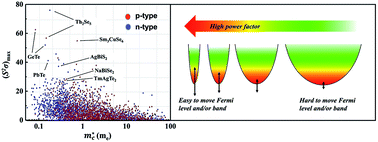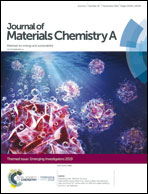Inertial effective mass as an effective descriptor for thermoelectrics via data-driven evaluation†
Abstract
Effective mass has been touted as an important descriptor in thermoelectric transport. Based on theoretical intuition, some reports demonstrate that low effective mass is preferable in thermoelectrics, while others propose that a large density of states effective mass for high Seebeck is the pathway to better thermoelectric materials. Leveraging on the available data from Materials Project, we present a data-driven conclusion that corroborates the central role of effective mass in high-throughput thermoelectric materials screening. The efficacy of the Fermi surface complexity factor in enhancing power factor is analyzed in relation to the effective mass for a large number of compounds. Here, we show that starting with a low inertial effective mass material, any changes in Fermi surface complexity factor will have a pronounced effect on its thermoelectric power factor and verify this strategy in recently discovered thermoelectric materials. This can be accomplished by employing band engineering using doping, or symmetry distortion, and starting with a base material that intrinsically possesses a low inertial effective mass.

- This article is part of the themed collection: Journal of Materials Chemistry A Emerging Investigators


 Please wait while we load your content...
Please wait while we load your content...